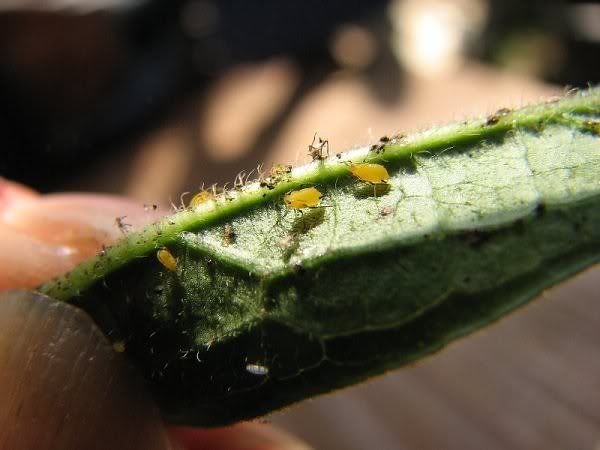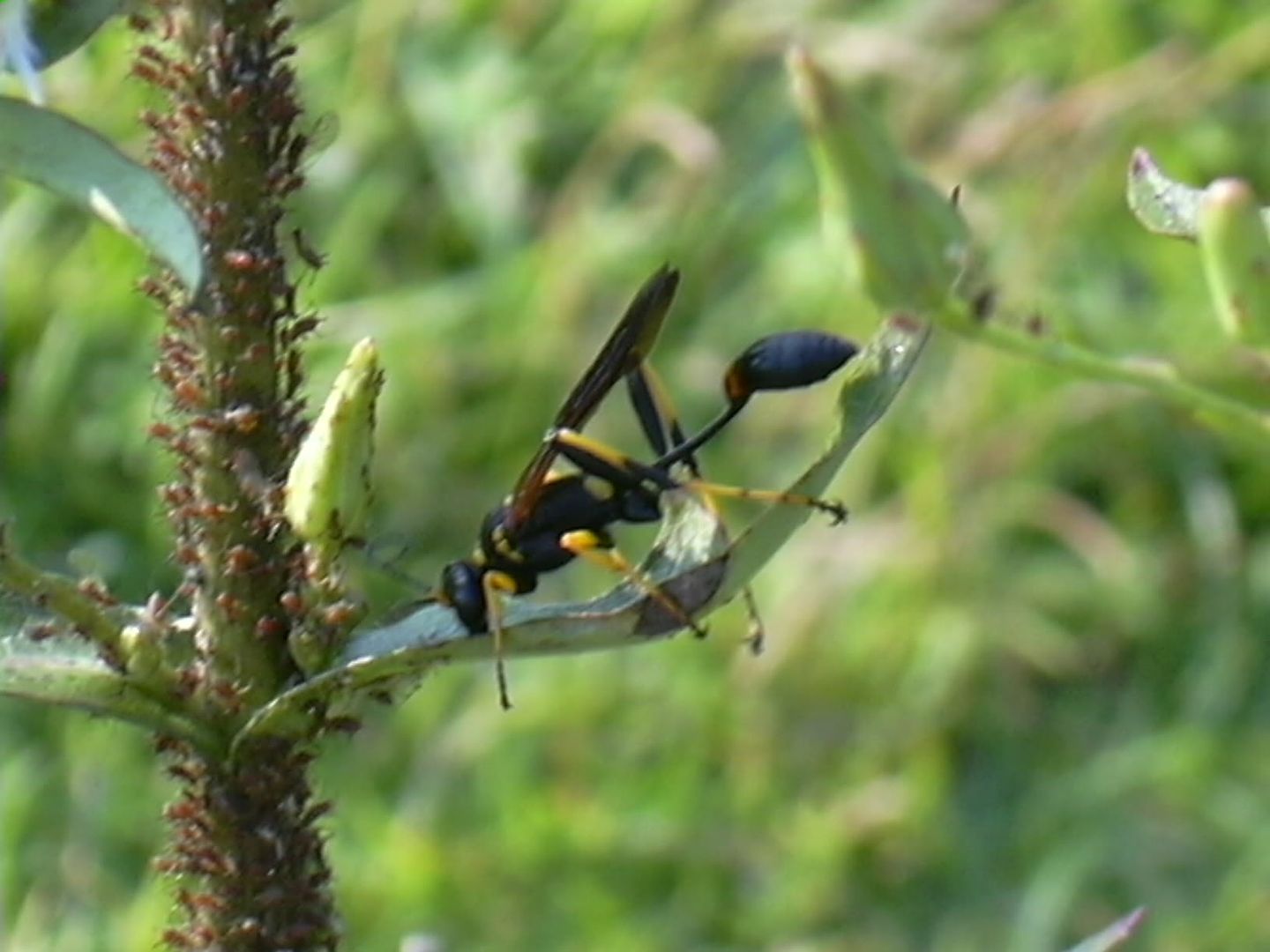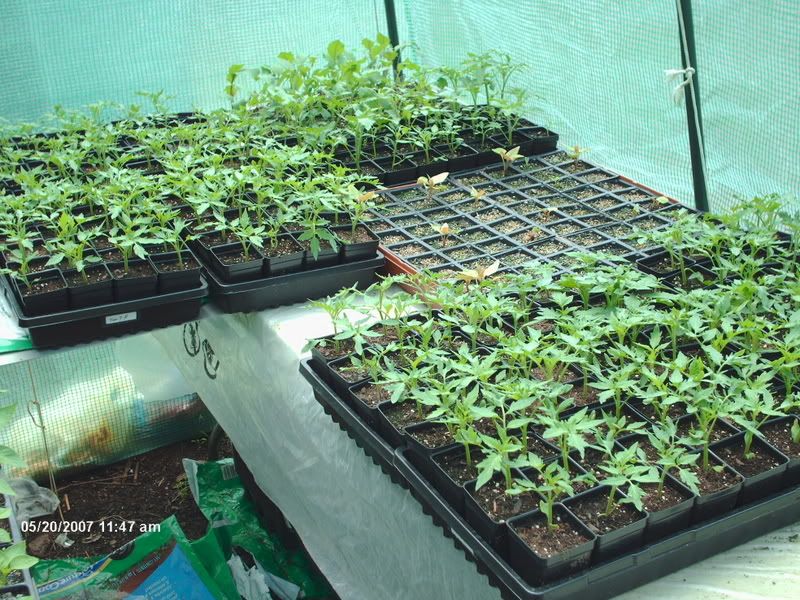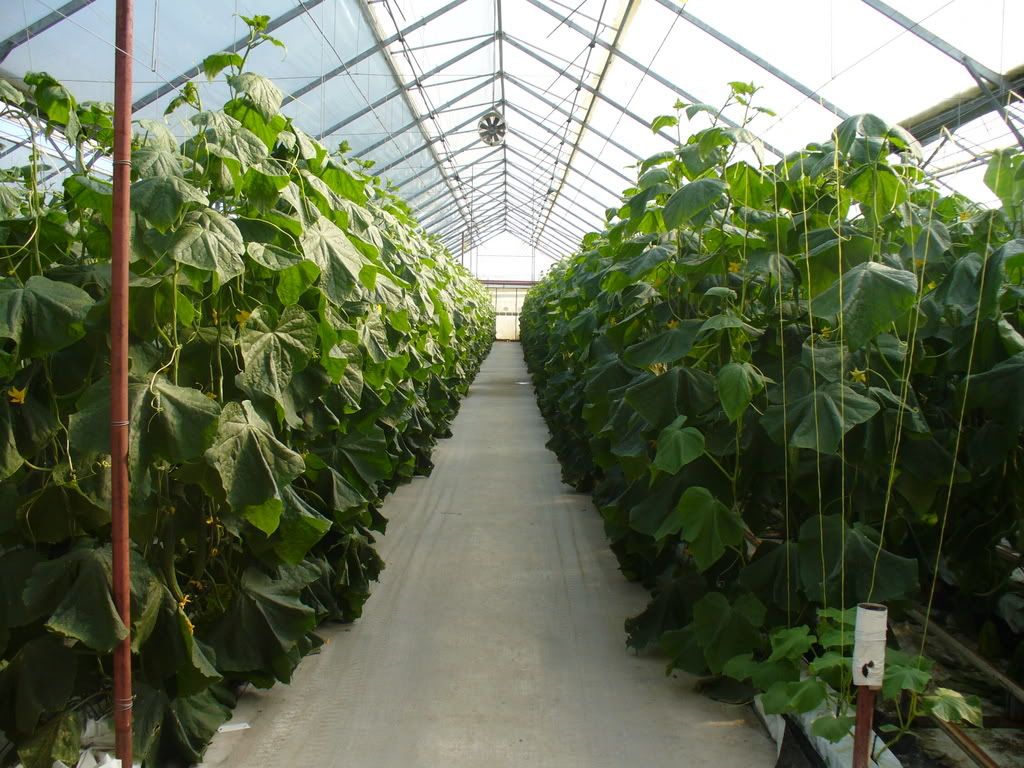

Insects and mites can cause physical damage to plants, or transmit toxins, bacteria, fungi or viruses from plant to plant. CEA can help exclude many insects and mites from the greenhouse environment. The closed nature of the greenhouse in conjunction with insect screening on vents and air intakes can create an effective barrier. However, the greenhouse environment coupled with the typical monoculture that is grown there can create a perfect breeding ground for insects and mites that do manage to get in and population explosions can occur quickly.
Many insects and mites harm plants. However, several groups are of major concern in
CEA/hydroponics. If not monitored closely and controlled immediately,
populations of pests can explode quickly and devastate a crop.
1). Aphids (several genera):
*Appearance: 6 legs/insect, round body, several colors (white, green, tan, black).
*Life cycle: Complicated: reproduce asexually in summer, sexually in winter.
Young born complete (miniature adults) and molt 4 times. White “cast skins” indicate the presence of molting young. Can be wingless or winged if populations high or when changing hosts. Mainly produce females (except in winter for sexual reproduction). High growth rate: 40-100 larvae/aphid (3-10/day over a few weeks).
*Damage: Young and adults suck plant sap (high in sugar); plant growth is reduced,
and leaves curl upward. Excess sugar is excreted as honeydew that drops onto lower leaves;
sooty molds colonize the honeydew and reduce photosynthesis. Toxic substances can be injected. Pathogens (esp. viruses) can be transmitted (mainly by winged adults).
*Control/Natural enemies: Gall-midge (Aphidoletes aphidimyza): same family as flies, mosquitoes. Gall-midge larvae inject poison that paralyzes and liquefies the aphid’s insides which can then be drained. Parasitic wasps (Ex. Aphidius matricariae): The wasp lays an egg on the aphid which then swells and hardens (“mummy”). After growth, the adult wasp leaves the mummy through a circular hole. Verticillium lecanii: A fungus that parasitizes and ultimately kills aphids. Ladybird Beetles or lady bugs (Hippodamia convergens) and Lacewings
(Chrysoperla carnea) also provide control of aphids.
Wasps, Aphids natural enemy
Search Here without leaving this page
Our Email Address --> greenlegacy05@yahoo.com
.
World Sunlight Map -Satelite View
Friday, May 2, 2008
INSECT AND MITE PESTS - APHIDS










Subscribe to:
Post Comments (Atom)



















No comments:
Post a Comment